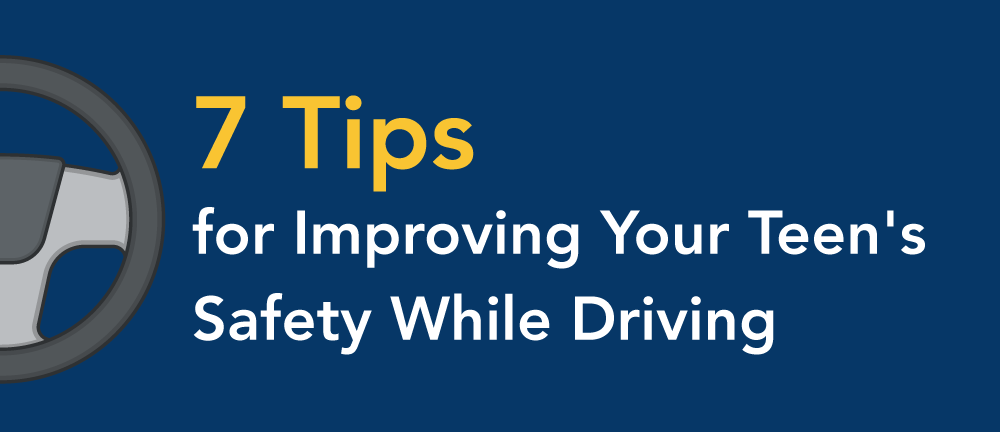According to the National Highway Traffic Safety Administration’s National Motor Vehicle Crash Causation Survey, over 97% of all motor vehicle crashes are caused by driver error. As new drivers, mistakes can happen, but it’s important to well equip your child with the necessary resources and basic teen driving rules before letting them take on the open road. Just as important is Parental involvement—and it doesn’t end when a child gets a license. Share these 7 teen driving rules to keep your child safe and collision free.
7 Teen Driving Rules to Live By
- Sign the Teen Driving Contract
The Teen Driving Contract is an agreement between the teen and their parents. This contract discusses expectations related to cell phone use, number of passengers, traffic violation expenses, drug and alcohol use and the importance of open communication. - Always Buckle Up
Teens, or all drivers for that matter, should always wear a seatbelt and make sure all passengers do too. Seat belts are the only defense mechanism for keeping passengers inside the vehicle instead of being thrown from the vehicle. A potentially life saving tool that many forget. - Don’t Slack on Regular Vehicle Maintenance
Responsible teen drivers should adhere to a regular maintenance schedule that includes: oil changes, rotations, and balancing of tires. In addition, the following items should be checked often: tire pressure, windshield wiper fluid levels, wiper blade efficiency, gas level and obstructions to view (dirty windshield). Download the Top Driver Maintenance Checklist now. - Avoid Driving in Poor Weather Conditions
The safest choice a driver can make when faced with driving in inclement weather might be to cancel or delay the trip until conditions improve. Download weather condition reporting resources straight to your phone, so that you’re never caught off guard or in a terrible storm. - Stay Vigilant
Don’t engage in distracted driving or other activities that would otherwise divert your attention from the road. Distracted driving includes: texting and talking on your cell phone, eating, applying makeup, etc. - Adhere to Curfews
Late night driving is risky, especially for a less experienced driver. Communicate your schedule and activities to your parents. Most importantly, be home on time and know that there are other options available should you need a ride home past curfew. Uber, Lyft or another adult — you’ve got options. Don’t put yourself at risk. - Resist the Urge to Speed
According to the National Highway Traffic Safety Administration, 35 percent of male drivers between ages 15 to 20 who were involved in fatal crashes in 2012 were speeding. Teaching teens how to manipulate the brake and accelerator properly to reduce speed is where Top Driver comes in.
Interested in learning more valuable teen driving rules and collision stats? Read our past blog post “4 Major Causes of Traffic Collisions”. Or contact Top Driver to begin your teen’s safe driving journey.
